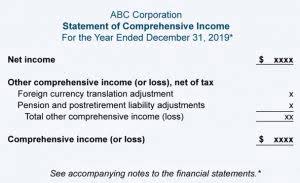Introduction to Capital Budgeting: The Goals of Capital Budgeting Saylor Academy

The bottom-up approach (sometimes also named a self-imposed or participative budget) begins at the lowest level of the company. After senior management has communicated the expected departmental goals, the departments then plans and predicts their sales and estimates the amount of resources needed to reach these goals. This information is communicated to the supervisor, who then passes it on to upper levels of management. The advantages of this approach are that managers feel their work is valued and that knowledgeable individuals develop the budget with realistic numbers. The drawback is that managers may not fully understand or may misunderstand the strategic plan. The process of budgeting for capital expenditures (capex) is essential for a business to operate and grow in a healthy and profitable way.
What is Capital Budgeting? – Definition, Process & Techniques
The management must make a critical decision in both scenarios regarding the selection of the best investment proposals from the available options. Before finalizing decisions of this kind, we meticulously weigh the advantages and disadvantages of each proposal. Factors such as the needed capital investment, anticipated future returns, and other pertinent considerations undergo a rigorous evaluation. The term commonly used to describe the complete process of ‘Investment Decisions’ is Capital Budgeting or Capital Expenditure Decision. When a corporation is presented with potential projects or investments, it has to employ capital budgeting analysis techniques to determine whether the investments are viable or not.
Process of Capital Budgeting
The purpose of capital budgeting is to make long-term investment decisions about whether particular projects will result in sustainable growth and provide the expected returns. The capital budget is used by management to plan expenditures on fixed assets. As a result of the budgets, the company’s management usually determines which long-term strategies it can invest in to achieve its growth goals.
#1 Payback Period Method
- A capital expense is the cost of an asset that has usefulness, helping create profits for a period longer than the current tax year.
- This indicates that if the NPV comes out to be positive and indicates profit.
- It also understands that additional inventory needs to be on hand in the event there are additional sales and to prepare for sales in the second quarter.
- Making a thorough assessment of capex needs, whether this is for maintenance, new acquisitions, or growth, from different departments, determines the range in how much to budget for capex.
- Aligned with this, a profitability index great than 1.0 presents better cash inflows and therefore, the project will be accepted.
All the upfront costs or the future revenue are all only estimates at this point. An overestimation or an underestimation could ultimately be detrimental to the performance of the business. Investing in capital assets is determined by how they will affect cash flow in the future, which is what capital budgeting is supposed to do.
Measuring Capital Expenditure Returns
- Although capital budgeting provides a lot of insight into the future prospects of a business, it cannot be termed a flawless method after all.
- Building a new plant or taking a large stake in an outside venture are examples of initiatives that typically require capital budgeting before they are approved or rejected by management.
- Additionally Figure 10.3 shows a comparison of a static budget and a flexible budget for Bingo’s Bags, a company that produces purses and backpacks.
- Whether a project is accepted or rejected depends on the value of inflows over current outflows.
- Lastly, the profitability index, also known as the benefit-cost ratio, is the ratio of payoff to investment.
- Through the capital budgeting process, the business can ascertain that the project is in line with the company’s larger strategic objectives.
- Your employees can view their payslips, apply for time off, and file their claims and expenses online.
This involves the process of analyzing and assessing the actual results over the estimated outcomes. This step helps the management identify the flaws and eliminate them for future proposals. Once the project is implemented, now come the other critical elements such as completing it in the stipulated time frame or reduction of costs.
Discount Rates
The drawback is that every expense needs to be justified, including obvious ones, so it takes a lot of time to complete. A compromise tactic is to use a zero-based budgeting approach for certain expenses, like travel, that can be easily justified and linked to the company goals. When faced with multiple investment options that all seem equally appealing, it becomes important to prioritize and rank them accordingly. Upon evaluation, we use a comprehensive cost-benefit analysis to rank the investment proposals based on their viability and merit. This enables the management to make suitable decisions without any hassle, especially in a situation of limited financial resources.
The Role of Operating Budgets
Taking into consideration all costs, market expectations, and business growth, is crucial when drafting a capex plan. The Net Present Value (NPV) — one of the most popular metrics in capital budgeting — uses the discount rate in its calculations. NPV helps determine the potential profitability of an investment by comparing the present value of cash inflows with the present value of cash outflows. Lastly, the profitability index, also known as the benefit-cost ratio, is the ratio of payoff to investment. It is calculated by dividing the present value of future cash flows by the initial investment cost.
This might mean considering potential pollution levels the expansion might produce and how this could impact the communities living nearby. Conversely, it could also mean assessing the positive impact the expansion may have on local employment levels. By incorporating such aspects into their capital capital budgeting involves budgeting process, organizations can actively pursue their CSR goals. Where t is the time of the cash flow, r is the discount rate (required rate of return), Σ is the sum of all cash flows of the project. IRR serves as a benchmark for companies to compare the profitability of various projects.

Cash Flow Statement: Breaking Down Its Importance and Analysis in Finance
Capital expenditure budgets are commonly constructed to cover periods of five to 10 years and can serve as major indicators regarding a company’s “five-year plan” or long-term goals. Determining the max spend on capital is a crucial early step in capex planning. Making a thorough assessment https://www.bookstime.com/ of capex needs, whether this is for maintenance, new acquisitions, or growth, from different departments, determines the range in how much to budget for capex. Knowing how to make quick and strategic decisions has never been more important than in today’s fast-paced world.
Everything to Run Your Business
Budgeting helps plan for those times when cash is in short supply and bills need to be paid. DaQuan can see the months when the cash payments exceed the cash receipts and when the company is in danger of having a cash balance below the minimum requirement of $10,000. Knowing the inflow and outflow of cash will help him plan and manage the shortage through a line of credit, delay in purchasing, delay in hiring, or delay in payment of non-essential items. Figure 10.5 shows how operating budgets and financial budgets are related within a master budget. After screening and evaluation, we subject the identified projects to the Capital Budgeting process. The list of suggested projects includes the estimated capital outlay (investment amount) and revenue generation for each project.

